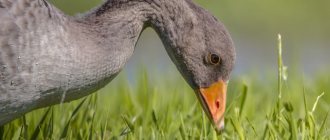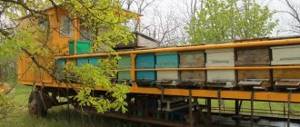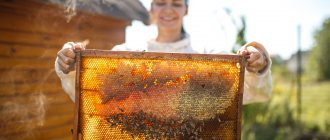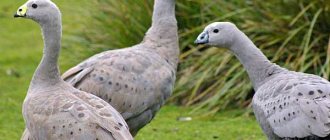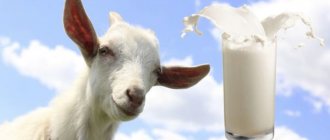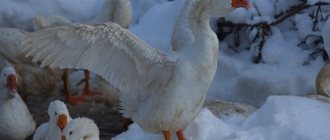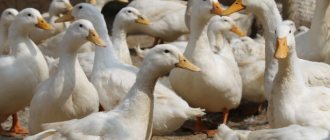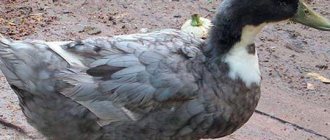Geese are a source of not only tasty meat, but also liver, eggs, down, and feathers. Therefore, the business of breeding geese quickly pays off and is gaining more and more popularity. In addition, it does not require large capital investments.
To reduce labor costs and the likelihood of errors, before starting, you should develop a business plan with a competent approach that will help answer the following questions : how to organize the business, how much you need to invest at the start, what breeds are worth breeding, how to grow and where to sell, and other nuances.
The advantages of this business include:
- High profitability reaching 80-100%
- Low level of competition
- Low labor costs
- No need to purchase expensive equipment
- Payback in 5-6 months of work
Disadvantages:
- Search for sales channels
- Poultry house construction
- Obtaining a quality certificate for product sales
- As you can see, the disadvantages are minor and easily solved.
Is it profitable to keep geese for sale?
The business of raising geese is profitable for several reasons. Firstly, goose products are expensive . Secondly, poultry brings fourfold profit: from the sale of meat, liver, feathers and down. Thirdly, these products are in demand among buyers and entrepreneurs in other areas.
The cost of 1 kg of goose meat varies between 450-550 rubles. , a kilogram of liver 500 rubles, a week-old gosling from 300 rubles. By selling 100 heads per month, you can earn from 200 thousand rubles. only from meat and offal. Additional income is received from the sale of young animals purchased for home breeding and litter used as fertilizer.
In general, business profitability ranges from 50 to 100% due to short payback periods of several months.
Opening plan
When opening a goose farm in Russia, you need to act consistently. You must first conduct a thorough analysis of this niche. Only in this case can we hope for high profitability.
Niche and competitor analysis
Competition in this area is low. To analyze the business of raising geese, you need to find out about all the existing farms in the area. Usually they can be counted no more than 3, but most often their number does not exceed 2 or are completely absent. Their absence is beneficial for the entrepreneur, since it is possible to replace import suppliers.
If there are competitors, then it is important to find out their livestock, distribution channel and product cost. You need to try to adjust the plan so as not to interfere with competitors.
SWOT analysis
It is necessary to highlight all the strengths and weaknesses of the project. The first include the constant demand for poultry meat, a large selection of sales channels, and an individual approach to customer requests. Weaknesses include competition from imported manufacturers, poor staff performance, and risks associated with the epidemiological situation.
You may like: How to collect documents to open a grocery store
Project opportunities include business expansion by increasing the number of livestock, the ability to work with government representatives, and the creation of related services. Risks include high competition, increased prices for feed, increased rent, and bird diseases.
Bird keeping
In order for the business to be successful, the goose must be kept in a room that meets all requirements. This must be taken into account before starting your business. The poultry house should be located at a distance of at least 10-15 km from industrial buildings. There should be no drafts or dampness in the room. Heating is required. The area must correspond to the available livestock.
What equipment is needed
The goose farm must have a feather removal apparatus. Its cost is about *60 thousand rubles. The premises must be equipped with drinking bowls, feeders, cages, lighting and heating lamps. To breed offspring you need an incubator. Geese should be bred only in proper conditions. Otherwise, there is no hope for their survival.
Recruitment
For a business to be profitable, you need to take a responsible approach to choosing personnel. Workers must have experience in the niche. They must be careful and responsible. It is better to start looking for them in advance, since not everyone wants to work in too remote areas.
Registering your business
The recommended OKVED code is 01.47.1. It includes raising poultry and young animals. An entrepreneur must register as an LLC. This is necessary in order to further cooperate with large companies. The package of documents for registration must include a certificate of state registration. registration, tax payment document, charter, constituent agreement, certificate from the statistics service.
The profit received must be legal. Registration is required.
Which tax system to choose
To succeed in poultry farming, you need to choose the right taxation system. The recommended option is 6% of revenue. Additionally, owners of agricultural farms are provided with grants and preferential programs.
Product sales channels
There are several channels for selling products. It is better to choose several directions at once to increase the profitability of the business. Products can be sold to small and large stores, as well as markets. You can also agree on cooperation with processing companies.
The best option is to open your own store. Over time, you can turn a small store into a whole chain.
Financial plan
When deciding whether breeding geese as a business is profitable or not, you need to make careful preliminary calculations. It takes about *800 thousand rubles to open. Monthly expenses – approximately *300 thousand rubles. Expenses directly depend on the number of livestock. The more there are, the higher your earnings and monthly expenses. It is better to start a business with a small number of geese, gradually increasing their number.
Profitability
Business profitability is 80%. The business pays off both ongoing expenses and initial investments. It is imperative to take into account the possible risks. You also need to find out in advance how much you can earn from geese. According to preliminary estimates, you can earn from 300 thousand to a million per month. It all depends on the livestock.
How to organize a mini goose farm
First you need to conduct a market analysis, paying attention to the following indicators:
- Competition The ideal option would be if no one is breeding geese nearby. If there are 2-3 competitors, it is worth finding out the number and breeds of their livestock, pricing policy and sales channels.
- Consumer demand for goose products You can conduct a survey of the local population, visit markets and supermarkets.
- Business expansion prospects Take into account future prospects that may require additional land and investments.
- Next, decide what breed you will raise: meat or egg. You will need to purchase from 300 to 500 birds. In this case, you should take popular, unpretentious breeds.
- On the farm territory, arrange a place for walking geese at a rate of 10 square meters. m. per bird, swimming pond at the rate of 0.2 sq. m. per individual and poultry house. The construction of the latter will cost 200-300 thousand rubles .
Meat breeds include:
- Kholmogorskaya. They gain a lot of weight quickly within 3-4 months. The maximum weight of males reaches 12.5 kg, females 8.5 kg. Egg productivity is low: from 32 to 55 eggs per year
- Gray geese. Suitable for obtaining liver and meat. They grow quickly and weigh 7-10 kg. They produce up to 65 eggs per year
- Emdenskaya. They are also distinguished by rapid growth and weight gain up to 12.5 kg in males and up to 11 kg in females
- Rhineland. It is a meat breed. Males reach a weight of up to 8 kg, females up to 6 kg
- Vladimir geese. They represent a meat breed. They weigh 6-7 kg, egg production is 35-50 eggs per year
Kuban geese will be good if you want to keep an egg breed. Capable of laying more than 100 eggs
Room
When choosing a place for a farm, take into account the breed of geese, since some representatives only need a small area. They are looking for areas remote from residential buildings in rural areas. A barn, outbuilding, or garage can be used as a poultry house.
The premises must meet all sanitary requirements and fire safety standards. Be new or renovated, heated, dry, with insulated floors and lighting 15 hours a day. Ceiling height from 1.5 to 2.3 meters , temperature +10 degrees, area 50-70 square meters or 1 sq. m. for four birds. The floor should be covered with straw 30 cm thick. The room is divided into zones: for goslings, for adult birds, an incubation area and a nesting area.
When raising geese on pasture, the area is calculated from the ratio of 10 square meters. m. per individual. It is better to let the geese spend daylight hours in the fresh air, walking freely and eating grass. Nearby there must be an artificial reservoir with a bank sown with lawn grass.
Poultry house and requirements for it
To breed birds, you need a place and a poultry house, although geese will spend most of their time outside. For a poultry house, you can use any room made of wood, for example, an old barn, barn, etc. The walls of the room must be at least 3 cm.
Since geese love to eat fresh grass, it is recommended to walk near water bodies and on pastures. As for the size of the bird room, it will directly depend on how many birds will be present. It is recommended to allocate 1 square meter for one goose. meter.
The room must be dry and draft-free. It is recommended to repair the roof if it is already old and may leak water and moisture. It is also recommended to use bedding with a thickness of 30 cm or more for the winter period. You can use hay for bedding; it should be taken into account that its consumption is quite large. Therefore, this item will need to be included in the plan. For example, 100 birds will need 100 kg of hay for the winter. Therefore, it is recommended to prepare it yourself rather than buy it.
If bird droppings are to be used in the future, superphosphate should be added to the litter. This will allow the droppings to be used for fertilizer. To obtain high-quality litter, it is necessary to constantly clean and tidy the premises.
Geese of different ages and those that like to fight should be kept separately from the livestock. Therefore, it is recommended to divide the poultry house into parts. Also in the poultry house you should make nests for females and for hatching eggs.
Feed base
An important issue will be providing birds with a varied and balanced diet, on which the health of geese, the speed of weight gain and the quality of products depend. The food must be safe and environmentally friendly . The daily diet should consist of:
- Combined feeds, which are the basis of nutrition for geese
- Melons that act as a source of vitamins: beets, potatoes, tops
- Green feed obtained from walking
- Chopped pumpkin and cabbage
- Fish waste
- Legumes
- Fermented milk products: yogurt, cottage cheese, whey
- Silos
- Chalk, crushed eggshells and shells
In summer, the main part of the diet consists of succulent food and grass, at least 2 kg per day. After summer grazing, meat has the greatest value. In winter - compound feed, silage, grain, bran, root vegetables and dry branches of spruce with ground pine needles. By leaving geese for the winter, there is a 7% monthly decrease in profitability.
Geese should be fed every two hours. In the morning and evening, give roughage in the form of branches and hay, vegetables. Geese also love wheat, oats, and corn. You also need to provide drinking bowls with clean water, adding a weak solution of potassium permanganate to containers for adult geese.
Formation of a herd and purchase of an incubator
You can save on the constant purchase of young animals by forming a tribe yourself. Egg laying by females occurs in February and March. After 27 days of incubation, the eggs are inspected for damage and sprayed with water the next day. On day 30, offspring are expected.
To increase productivity, you need an incubator, the cost of which on average is 2,500 rubles . and an ovoscope for viewing eggs from 500 rubles. The breeding process will consist of the following steps:
- Daily check of nests and collection of eggs to prevent their deformation
- Inspection of eggs through an ovoscope and rejection of cracked, uneven specimens, with two yolks or dark spots on the white
- Horizontal laying of eggs in an incubator for 30 days
- Regularly turning laid eggs at least 4 times a day and avoiding lying on one side for two nights in a row
- Sprinkling eggs with water to prevent overheating
If placement into the incubator does not occur immediately, then the laid eggs are stored for no more than a week at a temperature of 8-12 degrees, humidity 78% and no draft with the blunt end facing up.
How to properly increase livestock growth
A goose farm will be a successful investment only if you approach the raising of geese wisely. To do this, you need to choose the right pair. It is not recommended to breed individuals with closely related relationships; this will reduce the survival rate of the livestock and reduce production indicators. To avoid mistakes, you need to buy birds from several breeders.
Successful breeding will be facilitated by a properly selected breeding gander. It is very important to examine the bird from all sides to determine its qualities. A fairly fighting male is considered excellent for breeding. A gander is heavier than a goose, and at the ends of its wings it should have a kind of scissors, these are 2 small feathers. On the wings of a high-quality bird there are 20 flight feathers of two orders; on the tails, accordingly, there should be an equal number of upper and lower tail feathers.
The male is able to maintain the profitability of a goose farm for 8-10 years. For each male there are 4-5 geese. Every year it is necessary to replenish the livestock with young individuals; their percentage in the herd should be 20-30%. Oviposition lasts from February to March. Each egg should be placed in a dry place at an air temperature of 7-13°C.
If a female lays a lot of eggs, but does not sit on them herself, there is no need to cull her right away. The eggs can be placed under another, less fertile goose. It is best to place eggs in nests in the evening. On days 10-27, all eggs need to be examined under an ovoscope and rejected. After 28 days from the start of incubation, you need to sprinkle the eggs with water. The offspring will hatch on day 30.
Sales options for finished products
There are several ways to sell products:
- Own retail and wholesale store, market point
- Sales of meat, liver and eggs to supermarkets, cafes, restaurants, processing companies
- Sales of down and feathers to textile enterprises
- Sale of goslings to households for breeding
- Sales of goose droppings to farmers, nurseries, and private homeowners
- Cooperation with intermediaries
- Promotion through your own website, social networks, message boards
To increase business profitability, it is better to use several distribution channels. You should not neglect traditional advertising means: advertisements in the media, in transport, in the entrances of houses. Make a name for yourself at agricultural shows and town fairs.
Selling a product
The goose farm plan must be highly profitable. This is achieved through the sale of products (meat, eggs, feathers, liver, etc.). On average, a farmer can receive from 600 to 1,500 rubles for selling the meat of one bird.
In addition to meat, down is also in demand. One bird yields approximately 500-600 grams, the cost of which is about 1,200 rubles. In this regard, it is possible to establish relationships with factories, studios and other institutions that create blankets and pillows from goose down and feathers.
Many people are interested in the litter, but its implementation will require an expert opinion, which can be obtained from veterinary clinics. After this, the owner will receive a certificate for its sale. One bird brings about a kilogram of droppings per day. In a year it will be possible to sell it for 1000 rubles, but this is from one bird.
Business registration
You can set up a goose farm:
- As an individual entrepreneur with a simplified tax system of 6% on income and OKVED codes:
- As a legal entity as an LLC with a large-scale business
- As a peasant farm , giving the right to receive government grants and subsidies
OKVED for a goose farm
- 01.24 for breeding poultry
- 52.22 for retail trade
- 51.32 for wholesale trade
You will also need to obtain the following documents:
- permission to erect a building and organize a farm from the local administration
- permission from the Sanitary and Epidemiological Supervision, Veterinary and Fire Services
- agreement for waste and solid waste disposal
- quality certificates for farm products
The farm’s activities are subject to periodic inspections by Rospotreb and Rosselkhoznadzor, the Fire Inspectorate, and the Rostekhsluzhba.
How much do you need to invest at the start?
For a goose farm of 500 heads, the expense items will be:
- purchase of young animals – 20 thousand rubles.
- rent of pasture and purchase of a poultry house - 200 thousand rubles.
- purchase of equipment and inventory – 25 thousand rubles.
- purchase of feed and vitamins – 300 thousand rubles.
- paperwork and other expenses - 30 thousand rubles.
On average, you will need from 570 thousand rubles. Having a suitable plot and premises, you can reduce your investment by 2 times.

